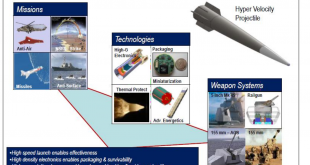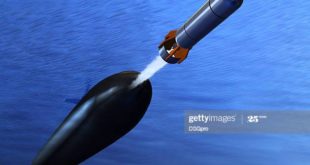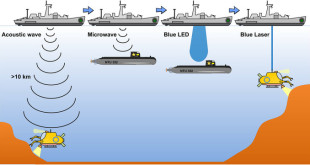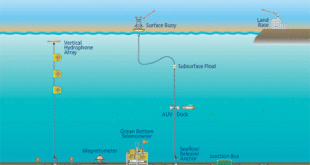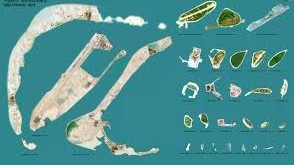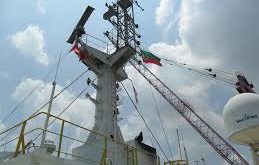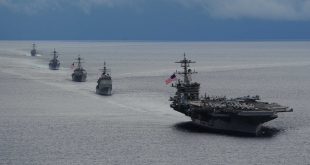The US Navy is concerned about the survivability of Navy surface ships in potential combat situations against adversaries, such as China, that are armed with large numbers of missiles, including advanced models, and large numbers of UAV. In response, the Navy surface evolved a new organizing for the Navy’s surface …
Read More »Navies developing new Propulsion technologies for High Speed and longer range torpedos
Torpedoes are self-propelled guided projectiles that operate underwater and are designed to detonate on contact or in proximity to a target. For the U.S. Navy, the modern torpedo enables submarines to defeat surface and undersea threats and gives surface ships and aircraft the means to reach beneath the surface and …
Read More »Underwater Communication technologies critical for submarine, AUVs and ASW operations
Approximately 70% of the Earth’s surface is covered by water, yet almost 95% of the underwater world remains unexplored. Nearly 4000 robots are swimming up and down in the world’s oceans, which allow scientists to measure and understand ocean dynamics, like the directions and speeds of currents, as well as …
Read More »Material coatings on Ships and Submarine hulls reduce drag, enhance stealth and prevent marine growth, enhancing their durability and performance
Material coatings on Ships and Submarine hulls reduce drag, enhance stealth and prevent marine growth, enhancing their durability and performance. Ship manufacturers are increasingly looking towards materials that can improve performance and increase weapons load, while reducing fuel costs, maintenance, and environmental impact. Approximately 80% of the fuel consumed by a …
Read More »Navy developing next generation Submarine Monitoring Network technologies for Antisubmarine warfare (ASW)
Anti-submarine warfare (ASW) has always been a game of hide and seek, with adversarial states looking to adopt and deploy emerging technologies in submarine stealth or detection to give them the strategic edge. The advantage has shifted back and forth, but, on the whole, it has proved easier to hide …
Read More »Countries building Artificial islands for economic progress, establishing industry,and exerting geopolitical and military control
An artificial island or man-made island is an island that has been constructed by people rather than formed by natural means. Artificial islands may vary in size from small islets reclaimed solely to support a single pillar of a building or structure, to those that support entire communities and cities. Human-made …
Read More »Navies testing Augmented-Reality(AR) systems onboard Warships for battlesace situation awareness, combat training and remote maintenance
Military operations are becoming increasingly diverse in their nature. To cope with new and more demanding tasks, the military has researched new tools for use during operations and during training for these operations. There have been numerous goals driving this research over the past several decades. Many of the military …
Read More »Ships require Attitude Stabilization System for Satellite Tracking Antenna
In the age of information technology, mobile data communication has become essential due to its convenience. A major role of mobile communication networks is to provide ubiquitous broadband services. Regardless of the actual position of the antenna on earth, it is always possible to make contact with a communication satellite. …
Read More »US Navy thrust on preventative maintenance & prognostics-based approach to increase operational availability or mission success of Naval fleet or battlegroup
One of the major objectives of the military is to achieve high reliability and operational availability of their assets. Significant operational benefits are to be gained by employing highly reliable military assets. The major reasons why achieving high reliability is so important are: (1) maintaining weapons systems consumes a significant …
Read More »Rising importance of Non- Acoustic detection technologies of Stealthy submarines in Anti Submarine Warfare
Ship detection for offshore production operations, military activities, transportation and other marine applications is very important. Submarine is one of the most important weapon in modern wars. strategic submarines seem to be key to strategic stability, providing what is generally believed to be the most survivable nuclear second-strike force. Anti-submarine …
Read More » International Defense Security & Technology Your trusted Source for News, Research and Analysis
International Defense Security & Technology Your trusted Source for News, Research and Analysis
